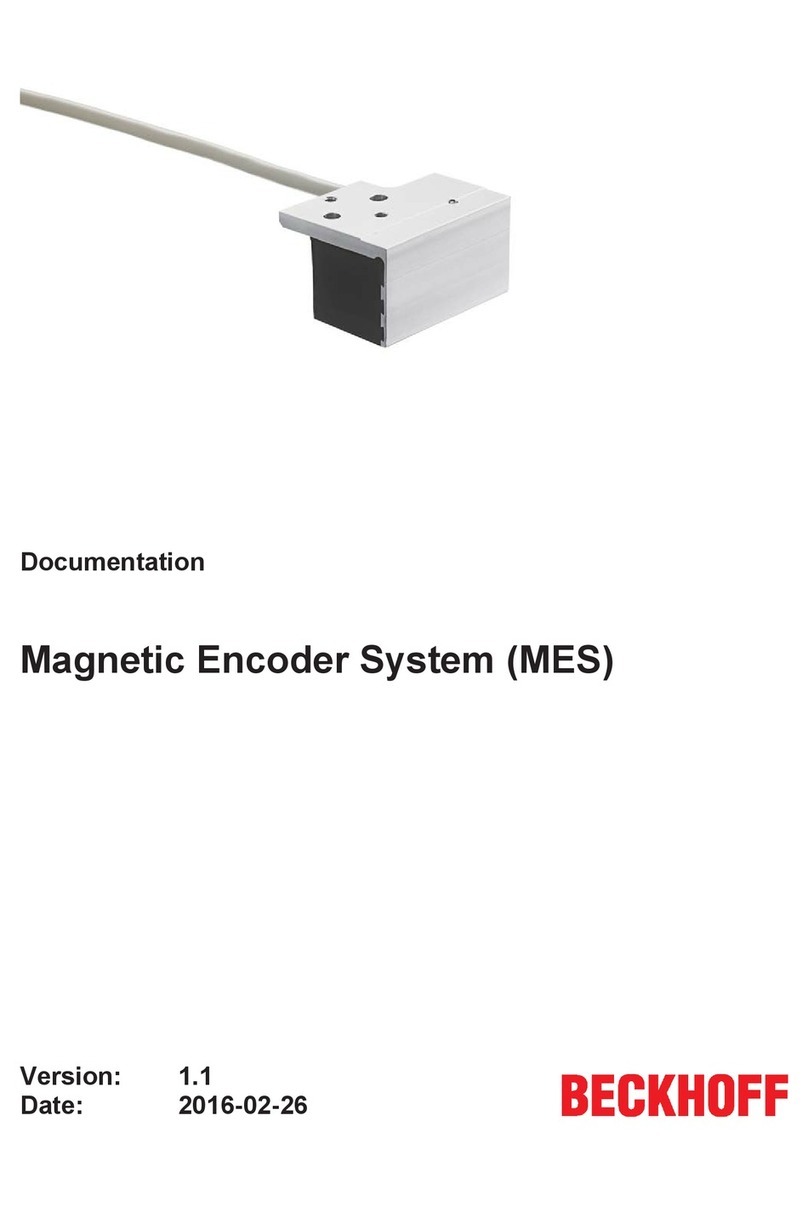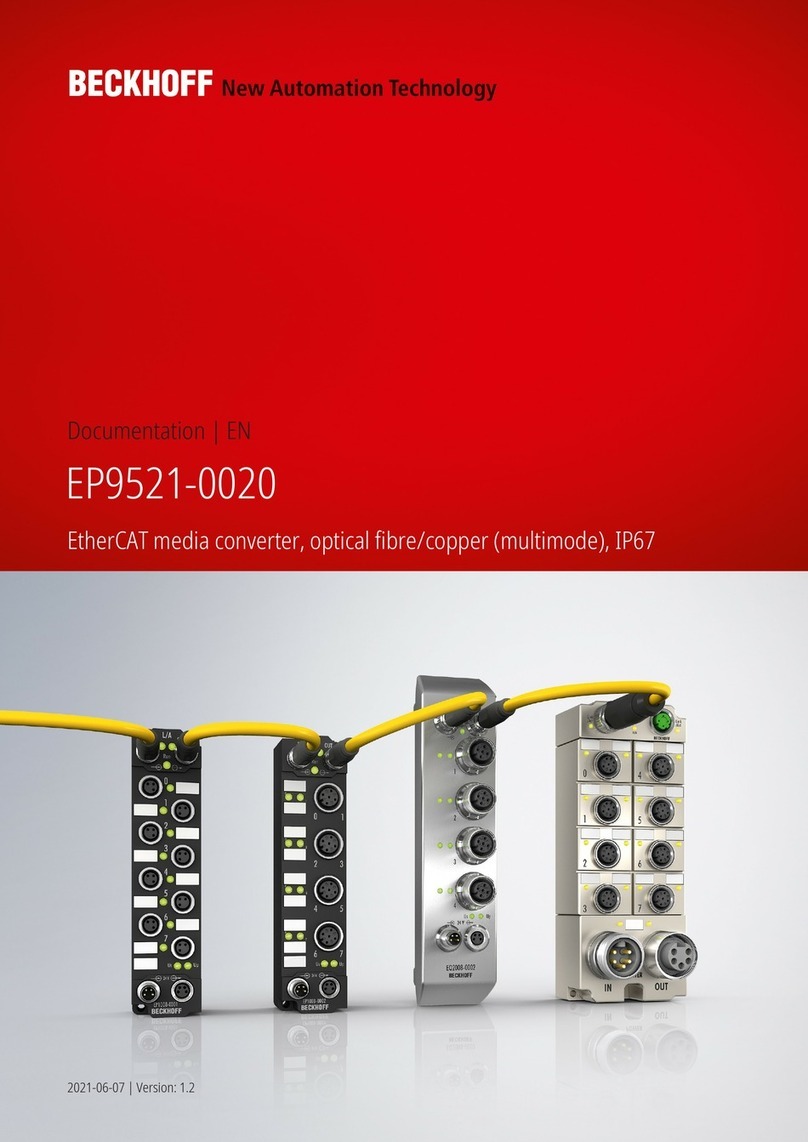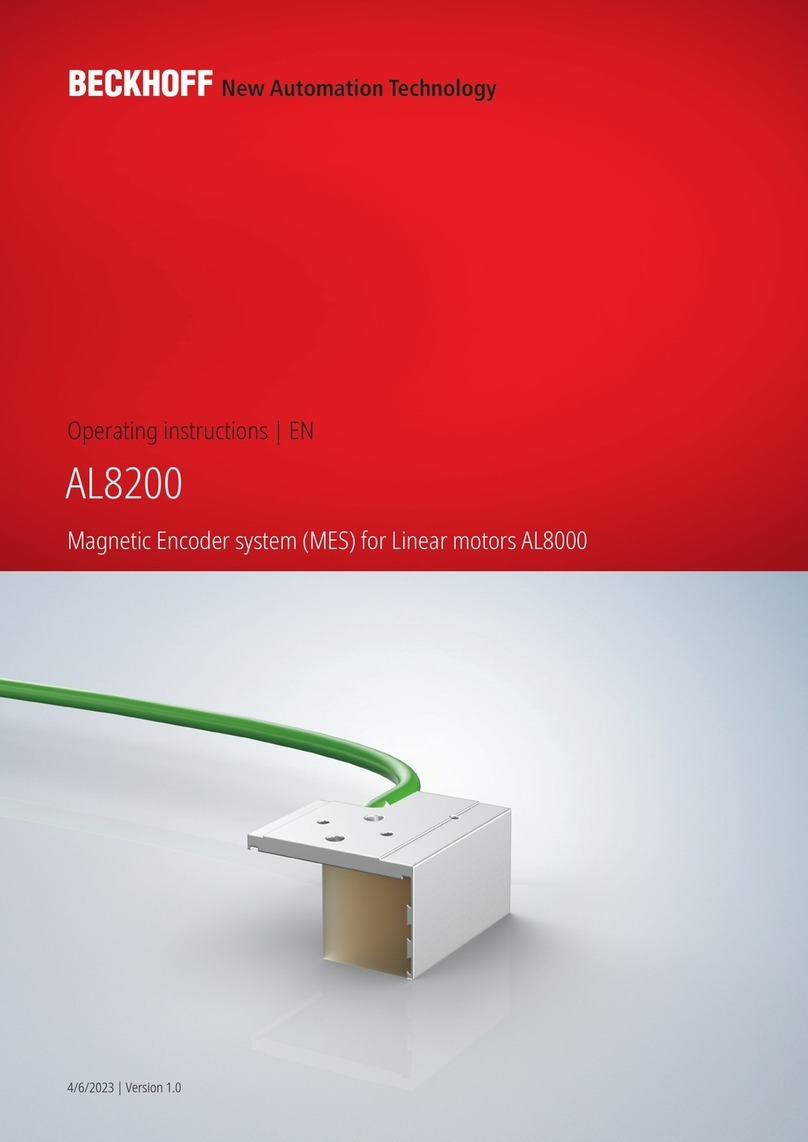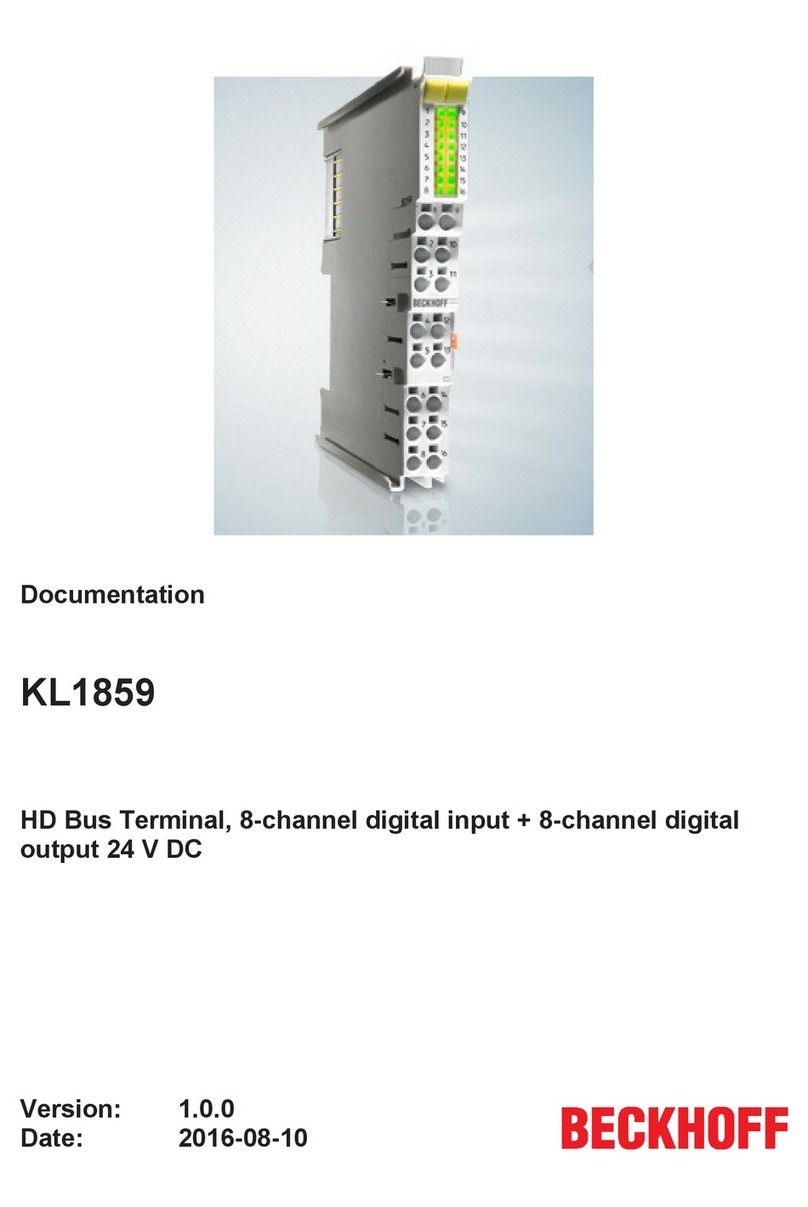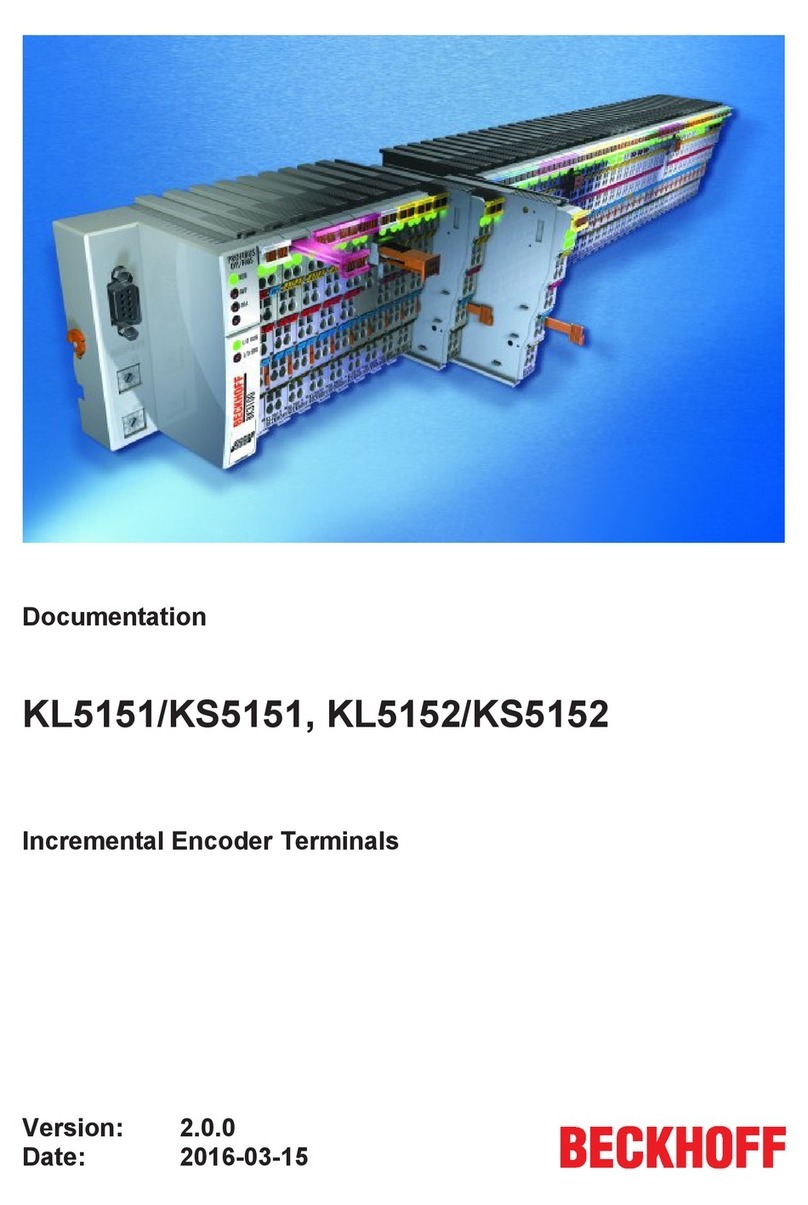
Table of contents
CU1521-xxxx, CU1561 3Version: 2.5
Table of contents
1 Foreword....................................................................................................................................................5
1.1 CU15x1 - Product overview ..............................................................................................................5
1.2 Notes on the documentation .............................................................................................................6
1.3 Guide through documentation...........................................................................................................7
1.4 Safety instructions.............................................................................................................................8
1.5 Documentation issue status ..............................................................................................................9
1.6 Version identification of EtherCAT devices .....................................................................................10
1.6.1 General notes on marking................................................................................................10
1.6.2 Version identification of CU Switches .............................................................................. 11
1.6.3 Beckhoff Identification Code (BIC) ................................................................................... 12
1.6.4 Electronic access to the BIC (eBIC).................................................................................14
2 Product overview ....................................................................................................................................16
2.1 Introduction .....................................................................................................................................16
2.2 Technical data.................................................................................................................................18
3 Basic principles.......................................................................................................................................19
3.1 EtherCAT basics .............................................................................................................................19
3.2 EtherCAT cabling – wire-bound ......................................................................................................19
3.3 EtherCAT State Machine ................................................................................................................20
3.4 CoE - Interface: notes .....................................................................................................................21
4 Mounting and wiring ...............................................................................................................................22
4.1 Dimensions .....................................................................................................................................22
4.2 Mounting and demounting...............................................................................................................23
4.3 Diagnostic LEDs..............................................................................................................................24
4.4 UL notice .........................................................................................................................................25
5 Commissioning/application notes.........................................................................................................26
5.1 Application notes.............................................................................................................................26
5.2 Notes on converters with RJ45 fiber-optic connection ....................................................................30
5.2.1 Principles of fiber-optic technology .................................................................................. 31
5.2.2 Notes on suitable optical fiber cables............................................................................... 36
5.2.3 Application with CU1521 and CU1521-0010.................................................................... 37
5.2.4 Connecting and disconnecting the fiber cable ................................................................. 38
5.3 Notes on converters with RJ45 POF connection ............................................................................40
5.3.1 Notes regarding suitable POF cables .............................................................................. 40
5.3.2 Connecting and disconnecting the POF cable ................................................................. 41
5.4 Notes regarding assembly of POF cables with the connector set ZS1090-0008............................43
6 Appendix..................................................................................................................................................47
6.1 Safety instructions and behavioral rules for Class 1 laser ..............................................................47
6.2 Firmware compatibility ....................................................................................................................48
6.3 Support and Service........................................................................................................................49












